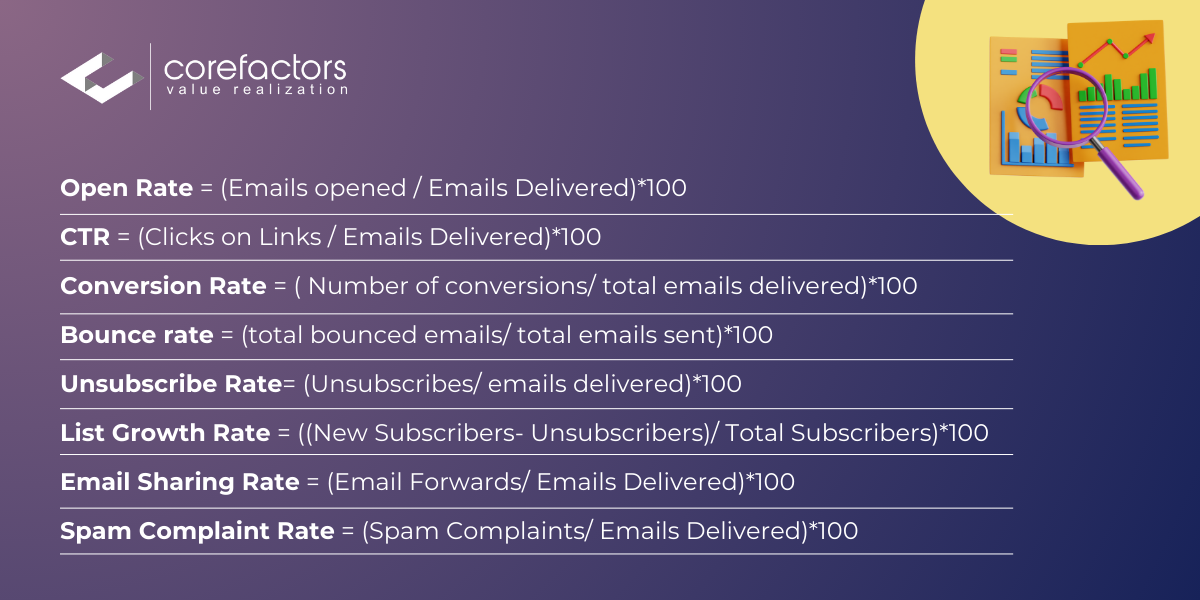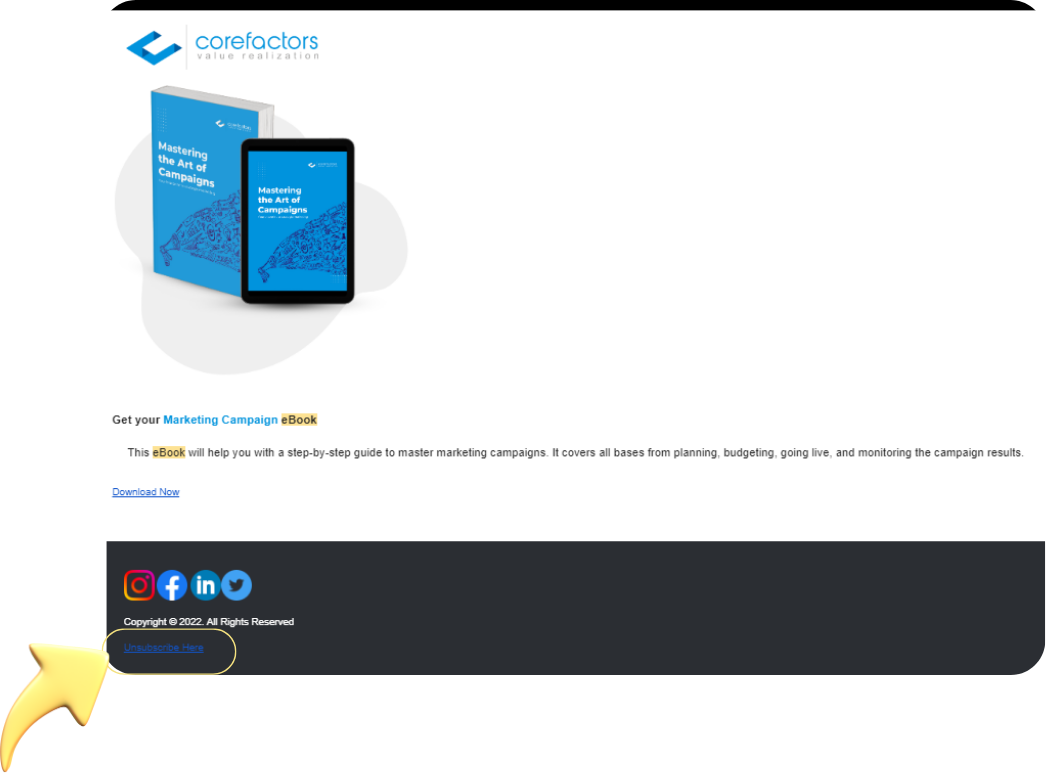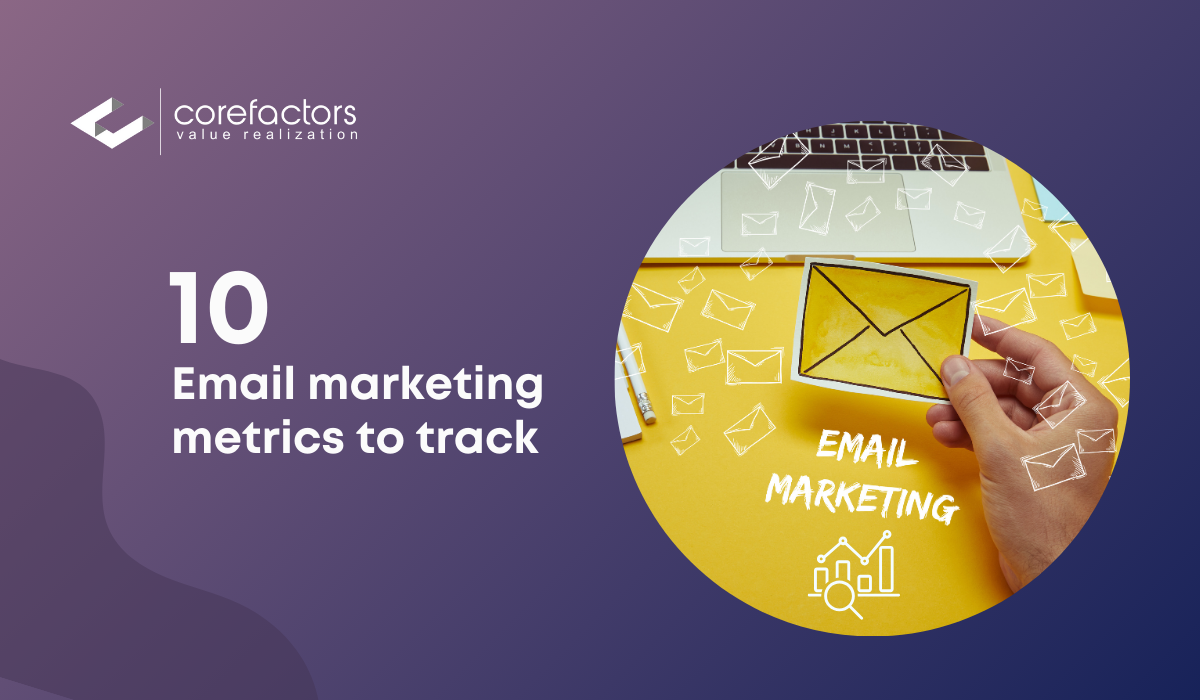Do your meticulously crafted email campaigns make a minimal impact? The truth is, that not all email marketing metrics are created equal. Tracking the right ones can turn a struggling email campaign into a success story.
In this guide, we'll uncover the essential email marketing metrics that every business should monitor. You'll learn why they matter, how to calculate them, and how they can transform your strategy for maximum impact.
Why Should You Track Email Marketing Metrics?
Simple: they reveal what works, what doesn’t, and how to refine your strategy for the best outcomes.
They are essential for several reasons:
- Performance Evaluation
- Strategy Enhancement
- ROI Optimization
- Deliverability Improvement
- Effective Segmentation
- Tracking Growth and Health
- Making Data-Driven Decisions
and much more.
The Essentials of Email Marketing Metrics
It’s time to turn data into action but zeroing in on the metrics that truly matter is key. Here are ten vital email marketing metrics every business should track to ensure their campaigns are impactful and effective.

1. Open Rate
Open rate is a critical indicator of how effectively your subject lines, pre-header text, and sender name align with your audience's interests and expectations. This percentage reflects your email's ability to stand out in an overcrowded inbox, making it a key measure of brand resonance and relevance.
Open Rate = (Emails opened / Emails Delivered)*100
However, analyzing open rates goes beyond just observing the numbers. To fully grasp this metric's impact, segment your audience to see how different cohorts respond to specific subject lines. Assessing the timing by the time of day and day of the week can reveal patterns to optimize your send strategy. Employ A/B testing to fine-tune subject lines, ensuring they capture attention and resonate with each segment.
Keep in mind that while a high open rate is a positive signal, it doesn't automatically translate to engagement. It's merely the gateway to the more significant metrics that determine the overall success of your email campaign.
2. Click-through Rate (CTR)
CTR is a direct measure of how engaging your email content is. It reflects the percentage of recipients who engage with your email by clicking on one or more links, offering insights into how effectively your message drives action.
A strong CTR indicates that your content, call-to-action (CTA), and overall email design resonate well with your audience.
CTR = (Clicks on Links / Emails Delivered)*100
Identifying which links attract the most clicks and the audience segments engaging with them helps refine your content strategy to better align with your audience’s interests.
Link placement, whether above or below the fold, can significantly impact click behavior.
Tools like heatmaps and click tracking offer insights into recipient interactions, enabling you to optimize layout and content for greater engagement.
3. Conversion Rate
Conversion rate evaluates the effectiveness of your email campaigns. It represents the percentage of recipients who completed the desired action, such as making a purchase, filling out a form, or registering for an event, directly linking your email marketing efforts to tangible business outcomes.
Conversion Rate = ( Number of conversions/ total emails delivered)*100
To boost conversion rates, ensure your email content aligns seamlessly with the landing page.
Consistent messaging, design, and CTAs create a frictionless experience that encourages conversions.
Advanced tracking, such as UTM parameters and CRM integration, offers clear insights into which campaigns effectively drive audience action.
4. Bounce Rate
The bounce rate reflects the percentage of emails that fail to reach the recipient's inbox.
A high bounce rate indicates that a significant portion of your audience isn't receiving your messages, but it also harms your sender reputation, leading to potential deliverability issues.
Bounce rate = (total bounced emails/ total emails sent)*100
Understanding the difference between soft bounces (temporary issues like a full inbox) and hard bounces (permanent issues like invalid email addresses) is essential.
Hard bounces should be immediately removed from your list to protect your sender reputation.
Soft bounces, however, warrant further investigation, if they persist, they can turn into hard bounces.
Implementing strong list hygiene practices, such as regular data verification and double opt-in processes, is vital to reducing bounce rates and maintaining high deliverability.
5. Unsubscribe Rate
The unsubscribe rate measures the percentage of recipients who opt out of your email list after receiving a campaign.
While unsubscribes are a natural part of email marketing, a sudden increase can indicate issues with your email frequency, content relevance, or overall messaging.
Unsubscribe Rate= (Unsubscribes/ emails delivered)*100
To minimize unsubscribes, it's crucial to understand the reasons behind them.
Implement shorter exit surveys to gather feedback from those who opt out, and use this data to refine your email strategy.
Segmenting your list by engagement levels can further reduce unsubscribe rates by delivering content tailored to each group’s interests and needs.
Additionally, offering subscribers the option to adjust their email preferences, such as frequency and content type can help prevent unnecessary opt-outs.
6. List Growth Rate
List growth rate tracks the net change in your email list over time, factoring in new subscribers and unsubscribers.
Maintaining a healthy list growth rate is crucial for expanding your reach and ensuring your email campaigns remain effective.
List Growth Rate = ((New Subscribers- Unsubscribers)/ Total Subscribers)*100
A stagnant or declining list growth rate can indicate that your lead generation strategies may need adjustment.
Evaluate your lead magnets, subscription forms, and acquisition channels to ensure they are optimized for maximum conversion. Implementing referral programs and strategic partnerships can further drive subscriber growth.
Additionally, assess the quality of new subscribers - are they actively engaging with your content, or are they merely increasing list size?
7. Email Sharing/ Forwarding Rate
Email sharing/forwarding rate gauges how many recipients find your content valuable enough to share with others.
This metric serves as a key indicator of content relevance and engagement and facilitates organic reach expansion.
Email Sharing Rate = (Email Forwards/ Emails Delivered)*100
A high sharing rate typically signifies that your content resonates strongly with your audience. Enhance sharing by incorporating social sharing buttons and explicit calls-to-action that encourage recipients to forward your emails.
Analyzing which content is most frequently shared can reveal what topics or formats your audience values most, guiding future content strategies to boost engagement and drive list growth.
8. Spam Complaint Rate
The spam complaint rate measures the percentage of recipients who mark your email as spam.
This metric is crucial because it directly affects your sender reputation and email deliverability.
Elevated spam complaints can result in your emails being blocked or relegated to the spam folder.
Spam Complaint Rate = (Spam Complaints/ Emails Delivered)*100
To minimize spam complaints, focus on maintaining relevance and ensuring that your emails are expected by adhering to a permission-based marketing strategy. This means only sending emails to subscribers who have explicitly opted in.
Regularly assess your email frequency and content relevance to ensure alignment with subscriber expectations. Include a clear and easily accessible unsubscribe link to minimize frustration and reduce the risk of recipients marking your emails as spam.

9. Revenue Per Email (RPE)
Revenue Per Email (RPE) quantifies the average revenue generated from each email sent, directly connecting your email marketing efforts to financial outcomes.
This metric provides a clear view of how effectively each email contributes to your business's revenue.
RPE = Total Revenue Of Emails/ Total Emails Sent
To maximize RPE, focus on content, segmentation, and personalization.
Tailoring emails to specific audience segments with personalized offers typically drives higher revenue.
Leverage advanced techniques such as predictive analytics and machine learning to enhance segmentation, ensuring the right message reaches the right audience at the optimal time.
Analyzing the relationship between RPE and factors like campaign timing, frequency, and content type can reveal strategies to refine your email approach and boost profitability.
10. Return On Investment (ROI)
ROI is the definitive metric for assessing the financial performance of your email marketing campaigns.
It calculates the return on investment, providing a clear picture of whether your email efforts are generating profit.
ROI = ((Revenue - Costs) /Costs) *100
To accurately calculate ROI, you must account for all costs associated with your email marketing, including technology, design, copywriting, and distribution.
Refine every element of your campaign, from subject lines and content to segmentation and timing.
Automating workflows can further enhance efficiency and reduce costs. Leveraging advanced analytics enables real-time ROI tracking for rapid adjustments to improve campaign performance.
Beyond these core metrics, there are additional indicators like
- Email Readability Score
- Mobile Open Rate
- Cost Per Lead
- Engagement Over Time
- List Churn
These metrics provide a more granular view of your email marketing health, ensuring you capture every nuance of your campaign performance.
Take Control of the Impact Now
It all starts with honing the full potential of your right data today. Understanding and optimizing these essential email marketing metrics can significantly enhance your campaigns' effectiveness and profitability.

Frequently Asked Questions (FAQs)
1. What are email marketing metrics and why are they important?
Email marketing metrics are performance indicators that help evaluate the success of your campaigns. They reveal how well your emails are engaging recipients and achieving your business goals.
2. How can I improve my email marketing metrics?
Enhance your metrics by crafting compelling subject lines, optimizing content and CTAs, segmenting your audience, and testing different elements. Regularly analyze performance to refine your strategy.
3. What is the impact of bounce rates on my email marketing metrics?
High bounce rates can harm deliverability and sender reputation, reducing overall email effectiveness. Regular list cleaning and addressing bounce issues are essential for maintaining campaign performance.
4. Which email marketing metrics should I prioritize for better results?
Prioritize Open Rate, Click-Through Rate (CTR), Conversion Rate, Bounce Rate, and ROI. These metrics offer critical insights into engagement, effectiveness, and overall campaign performance.








